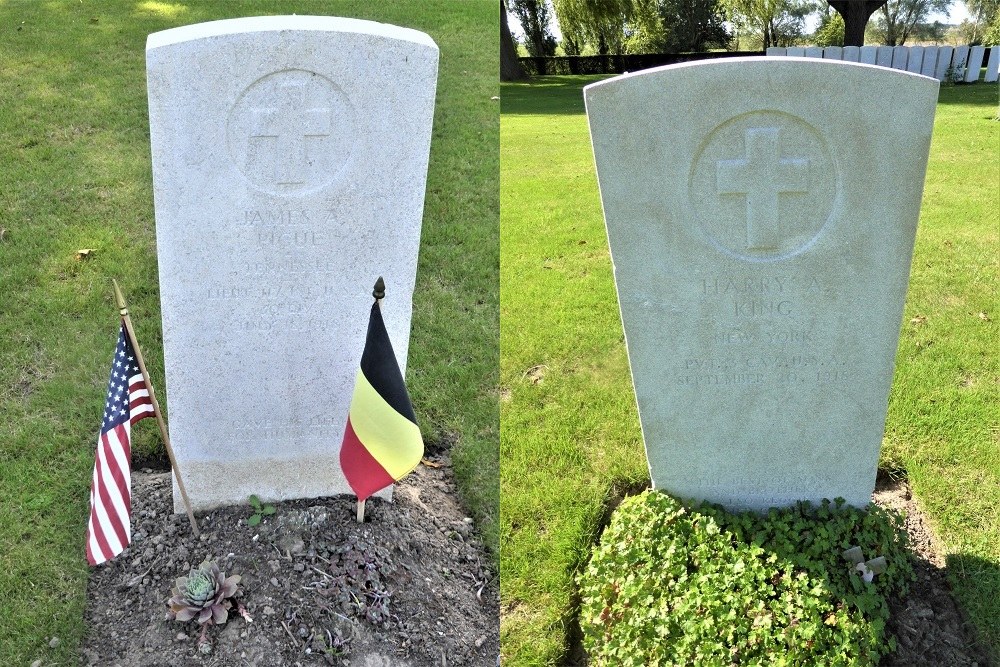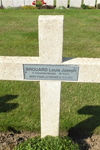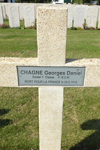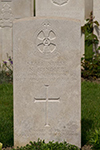Lijssenthoek Military Cemetery
Lijssenthoek Military Cemetery is an impressive witness to more than four years of war violence. During the war, the site was an important link between the base of the Allies and the front of the Ypres Salient. Due to its close, but still safe location of the front, facilities were set up here for the care of the wounded.
Lijssenthoek Military Cemetery contains 9901 Commonwealth war graves from World War I. Of these, 24 are unidentified. There are also 883 French and German war graves on this cemetery. In total there are 30 different nationalities buried here.
The nearby farm, Remi Siding, was initially used by the French 15ième Hopital d'Evacuation as field hospital from May 1915. From June 1915 the British set up a field hospital here, later this became four with an occupancy of up to 4000 beds.
In the spring of 1918 the field hospitals were withdrawn for a while and replaced by a British and French field ambulance, because it was feared that they would be too close to the front during the German spring offensive.
The whole area was transferred in a hospital village with 4 large fields hospitals where also the Canadians and as well the French were running hospitals and used the cemetery for the burials. This ‘Hospital village’ was in service from 1915 until 1920 and was the biggest hospital area in the First world War.
By the end of the war, Lijssenthoek had become the largest British (hospital) cemetery in Belgium with 10 784 graves, covering 30 nationalities.
Among the buried are 4 generals:
Brigadier General Hugh Gregory Fitton, CB, DSO
Visiting the front to learn about trench warfare when he was shot by a sniper and died of this wound on 20th January 1916. He is buried in plot II Row A Grave 27.
Brigadier General Alister Fraser Gordon, CMG, DSO
He was wounded on 31st of July 1917 and died of his wounds that same day. He is buried in plot XIV Row A Grave 13.
Brigadier General Robert Clemens Gore, CB, DSO
He was killed in action on 13th of April 1918, he was the commanding officer of 101st infantry brigade of the 34th Infantry division. He is buried in plot XXVI Row FF Grave 1.
Major General Malcolm Smith Mercer, CB
He was commanding officer of 3rd Canadian Division and died when he got trapped in shellfire during reconnaissance of the front line. He stayed with is Aide de camp behind in a trench when the German attack started and died after a shrapnel shell exploded in his trench on 3rd of June 1916. His body was on the 21st of June found in the area of Armagh Wood by Canadian soldiers. He is the highest ranking Canadian officer ever killed in combat. He is buried in plot VI Row A Grave 38.
Nellie Spindler
Staff Nurse Nellie Spindler (° September 1891) died on August 21, 1917 at the age of 26 during her service in the field hospital No. 44 in the hamlet of Brandhoek in Vlamertinge. She is buried on Lijssenthoek Military Cemetery plot XVI Row A Grave 3. She is one of two British female war victims buried in Belgium. The other Elsie Mabel Gladstone is buried in Belgrade Cemetery plot I Row A Grave 5 in Belgrade borough of Namur.
AMERICAN WAR GRAVES
In 1920 there was an American garden with no fewer than 123 graves. Lijssenthoek Military Cemetery was used by the United States Army as a temporary collective cemetery. In 1922, 53 bodies were excavated and transferred to the Flanders Field American Cemetery in Waregem. 67 bodies were also repatriated to the U.S.
Today there are only three official American graves on Lijssenthoek. They are known as the isolated graves, the only separate graves from WWI.
Two of them, Lieutenant Pigue and Sergeant Beattie, stayed here at the express request of the family. James A. Pigue was from Tennessee and died on September 20, 1918.At the bottom of the tombstone: "Gave his life for humanity"
A third grave, that of private first class Harry Arthur King, was not built until October 1921. Mother King had her son's body excavated from the Argonne American cemetery in France and taken to Lijssenthoek because her other son Reggie was also buried there. used to be. The inscription at the bottom of Harry's grave also refers to his brother: "Best of Sons and Brothers, Also Reggie Buried Close By".
Harry King served with the U.S. Cavalry, 3rd Regt. American Cavalry Troop "F". 26-year-old Harry died of pneumonia on September 20, 1918 in Bourbonne les Bains.
CHINESE WAR GRAVES
Next to the perk of the French is a perk with 35 Chinese from the Chinese Labor Corps. The Chinese Labor Corps was a non-armed division of the French and British armies.
The continuation of the war and the great loss of men led the Entente's armies to problems with supplies in 1916 due to a shortage of workers to ensure the supply of the necessary raw materials and ammunition.
China had already proposed in June 1915 to supply workers, but this was rejected by the British because it was too risky. However, the French agreed and in August 1916 the first workers arrived in France. These had been recruited in Tianjin and their numbers would eventually grow to about 44,000 by the end of the war.
Due to the heavy losses at the Battle of the Somme in the summer of 1916, there was an acute shortage of manpower in the British army. This reversed the initial refusal and began recruiting workers from the British Weihaiwei (Weihai) and Qingdao concessions. In April 1917 the first thousand arrived in Europe, but this number would rise to about 95,000 by 1920.
The workers were used for tasks such as road construction, trench repair, construction and demolition works, railroad work, loading and unloading ships and trains, land labor, clearing battlefields including unexploded grenades, supplies of ammunition and other war materials. A minority did skilled labor in factories or workshops (especially the Chinese in French service).
After the war they were also used to excavate victims, build war cemeteries and clean up the numerous ruins. Although not assigned to military duties, the nature of their work meant that they were at times at great risk as they were often close to the front or in range of artillery.
It is estimated that between 1917 and 1920 some 2,000 workers died of war and disease. The toll was especially high during the Spanish flu epidemic.
Do you have more information about this location? Inform us!
Source
- Text: Gio Theunissen & Marie-Christine Vinck
- Photos: Luc van Waeyenberge (1), Marie-Christine Vinck (2, 3, 4, 5)
Nearby
Museum
Point of interest
- Chapel Queen of Peace Poperinge - Poperinge
- Artwork "Snow Owl of Peace" - Meteren (Mont-des-Cats)
- British Headquarters The Lovie World War I Proven - Proven (Poperinge)
Monument
- War Memorial Abele - Abele (Poperinge)
- Monument CRAB’s RCLB Poperinge - Poperinge
- War Memorial Boeschepe - Boeschepe
Cemetery
- Commonwealth War Cemetery Nine Elms - Poperinge
- Belgian Graves Veterans Abele - Abele (Poperinge)
- Belgian War Graves Abele - Abele (Poperinge)







